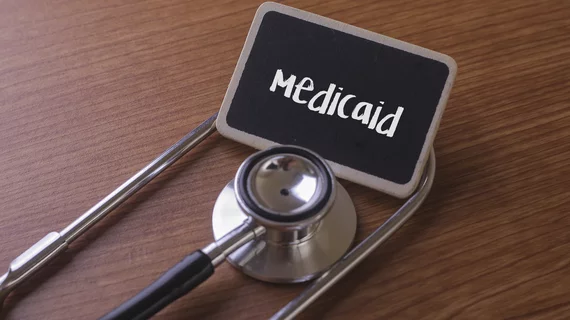Patients covered by Medicaid are four times less likely to complete follow-up imaging. What can be done?
Compared to patients with commercial insurance, patients covered by Medicaid are four times less likely to complete follow-up imaging recommended by radiologists and other physicians.
Authors of a new study published in Clinical Imaging suggest that these findings bring light to a greater need for methods to address care gaps that could result in poor outcomes for patients.
“Without an improved understanding of which patient-level factors limit access, standardized reporting systems enabling us to provide equal care could potentially contribute to ongoing health inequities,” Andrés Ángel-González Calvillo, with the University of California San Francisco School of Medicine, and colleagues said.
The findings are the result of an analysis of more than 13,000 imaging reports that contained additional follow-up recommendations. For the cases in which insurance type was known, 47.4% were listed as commercial, while 11.4% of patients were covered by Medicaid and 27.6% by Medicare. Having Medicaid insurance as primary coverage was the only factor found to be independently associated with reduced adherence to follow-up recommendations, even after accounting for age, gender, race/ethnicity, smoking history, primary language, BMI and neighborhood socioeconomic status.
“With such a complex interplay of factors affecting follow-up adherence rates, a multifaceted approach is needed to better understand and address these potential gaps in patient care,” the authors explained, before offering up some potential solutions to the dilemma.
First, the authors suggested the use of artificial intelligence algorithms for tracking follow-up completion—a method that has been tested and validated with good results.
They noted that automated communications, although well-intentioned, can be easily ignored by patients. Increasing provider efforts to communicate findings and the need for follow-up imaging could produce better results, the experts implied.
Finally, the authors brought up education initiatives targeted towards providers who might be less familiar with various forms of health insurance coverage as they pertain to imaging.
“Expanded education and training for residents in care coordination for patients could be an important step toward fostering improved equity in imaging utilization,” the experts wrote, adding that “Radiologists should be actively engaged in understanding the effects of barriers to imaging across different groups and aim to develop workflows that help to mitigate these barriers.”
The study abstract can be viewed here.

